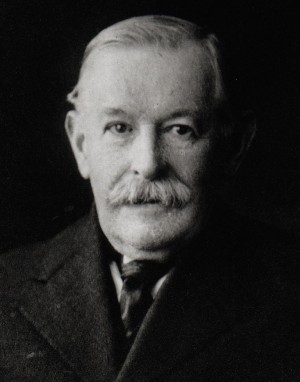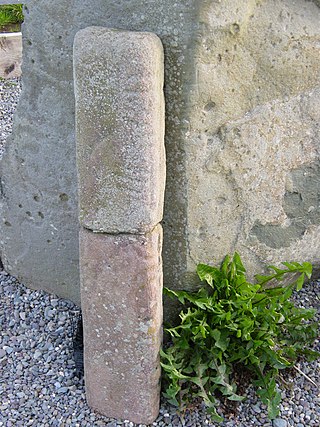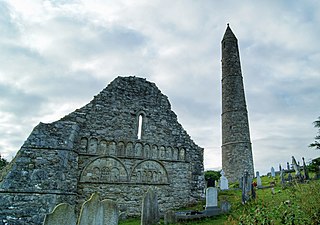
Rathcroghan is a complex of archaeological sites near Tulsk in County Roscommon, Ireland. It is identified as the site of Cruachan, the traditional capital of the Connachta, the prehistoric and early historic rulers of the western territory. The Rathcroghan Complex is a unique archaeological landscape with many references found in early Irish medieval manuscripts.

Roughly 400 known ogham inscriptions are on stone monuments scattered around the Irish Sea, the bulk of them dating to the fifth and sixth centuries. Their language is predominantly Primitive Irish, but a few examples record fragments of the Pictish language. Ogham itself is an Early Medieval form of alphabet or cipher, sometimes known as the "Celtic Tree Alphabet".

Robert Alexander Stewart Macalister was an Irish archaeologist.
Drummin fort is a ringfort and National Monument located in County Roscommon, Ireland.
Drumlohan souterrain and ogham stones, known locally as the Ogham Cave, is a souterrain with ogham stones forming a National Monument located in County Waterford, Ireland.
Ballintaggart Ogham Stones is a collection of ogham stones forming a National Monument located in County Kerry, Ireland.
Cloghanecarhan is a ringfort and ogham stone forming a National Monument located in County Kerry, Ireland.

Ratass Church is a medieval church with ogham stone inscriptions in Tralee, County Kerry, Ireland. It is a National Monument.

The Ardcanaght Stones are a pair of ogham stones forming a National Monument located in County Kerry, Ireland.

Dunloe Ogham Stones is a collection of ogham stones forming a National Monument located in County Kerry, Ireland.
The Tullygarran ogham stones are a pair of ogham stones forming a National Monument located in County Kerry, Ireland.

Kilcoolaght East Ogham Stones are a collection of ogham stones forming a National Monument located in County Kerry, Ireland.
The Darrynane Beg Ogham Stone is an ogham stone and a National Monument located in County Kerry, Ireland.
St. Manchan's Oratory, also called An Teampall Geal is a medieval oratory and National Monument in County Kerry, Ireland.

The Arraglen Ogham Stone is an ogham stone and a National Monument located in County Kerry, Ireland.

Church Island is a medieval Christian monastery and National Monument located in Valentia Harbour, Ireland.
Maumanorig or Kilcolman is the site of the remains of a medieval Christian monastery and National Monument located on the Dingle Peninsula, County Kerry, Ireland.

Kilmalkedar is a medieval ecclesiastical site and National Monument located in County Kerry, Ireland.
The Emlagh East Ogham Stone, also called the Priest's Stone is an ogham stone and a National Monument located in County Kerry, Ireland.

St. Declan's Monastery, containing the remains of Ardmore Cathedral, is a former monastery and National Monument located in County Waterford, Ireland.














